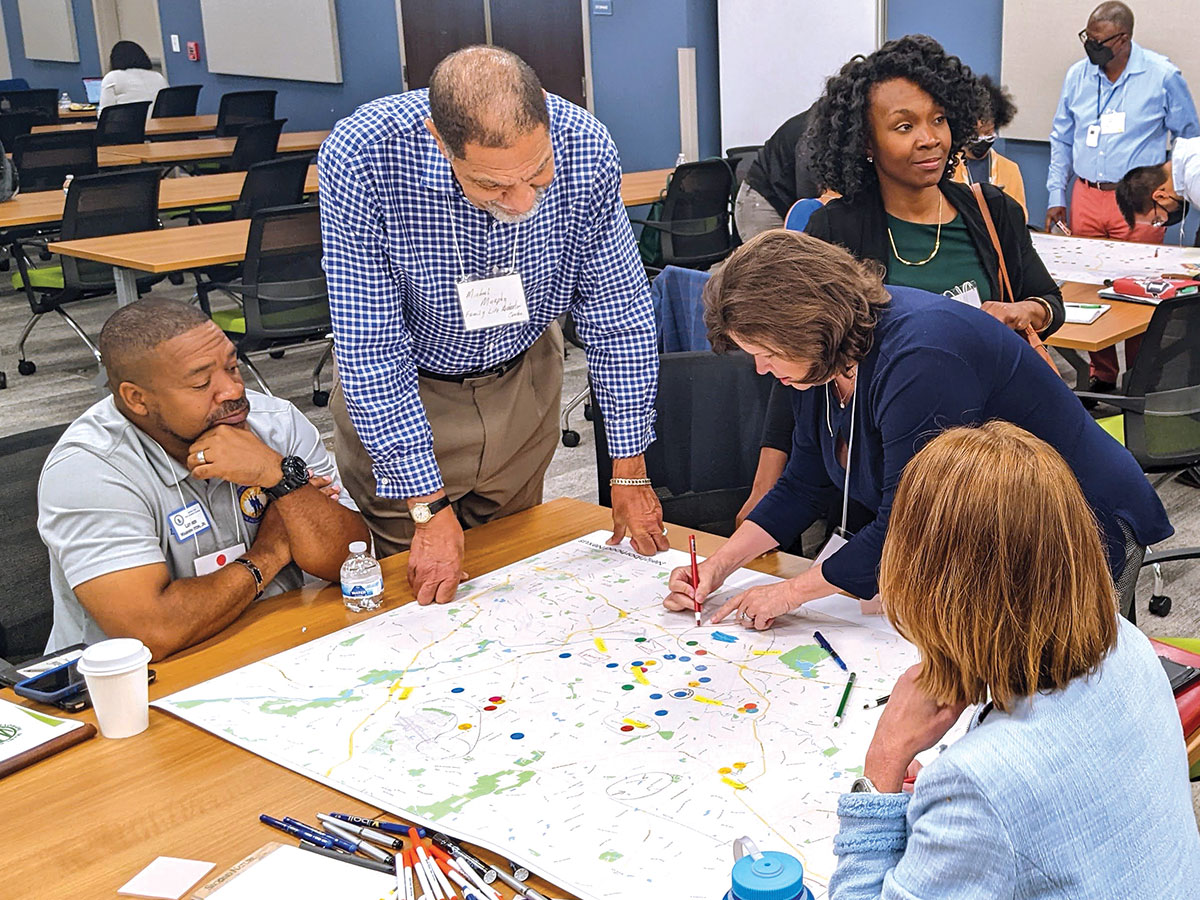
To Drive Equity in grantmaking, those we serve – and those we aspire to serve – need a seat at the table where decisions are made. An external review committee that’s diverse, inclusive, and influential drives grantmaking decisions that are both more equitable and better informed as to the issues, and the solutions, under consideration.
As a grantmaking professional, committee-building may not yet be in your (ever-expanding) repertoire. That’s why PEAK put together the member-exclusive guide How to Recruit and Onboard Diverse and Inclusive Grant Committees, along with How to Facilitate Inclusive Meetings for hands-on meeting management guidance.
Here are a few tips for getting your committee started, taken from How to Recruit and Onboard Diverse and Inclusive Grant Committees.
Recruiting for diversity
In order to be successful, your recruitment efforts in underserved communities must be deliberate, precise, and authentic.
Though research shows that under-resourced community members give significant time to the causes they care about, recruiting them for work with grantmakers or nonprofits they are unfamiliar with, or do not trust, can be a challenge. The top barriers to volunteering cited by participants in a study by The Denver Foundation include the fear of being used as a token, the pressure of being asked to represent a certain viewpoint, not feeling connected to the organization (through leadership, staff, or existing community), and economic hardship.
Some of the outreach strategies to consider, particularly for overcoming those barriers:
- Poll other foundations (particularly community foundations), grantees, and other stakeholders to learn about people of color who lead local nonprofits, businesses, or movements. You can also ask them to help solicit volunteers from their communities by cross-posting your call.
- Communicate the time commitment up front and in writing, as well as what you can offer volunteers in exchange for their time. Indicate whether meetings will be virtual or in-person, when they’ll be held, and where. Consider public transportation options to the meeting site, and whether you can offer child care, transportation stipends, and meals where applicable. Make volunteer information available in multiple languages.
- Pick up the phone and invite individuals you’ve identified as potential participants. Talk to them about your foundation’s priorities, process, and why you believe their input is integral to the impact you seek to affect.
Keep in mind that these strategies are unlikely to be successful in the long-term without the most important (and arguably the most challenging) element: building authentic relationships with the communities you wish to include. (See the full guide for tips on relationship-building.)
Onboarding inclusively
Alongside standard orientation materials – an overview of the organization and the program, recommendations for approaching grant reviews, details for accessing applications and other materials, and logistics for meeting, communicating, and decision-making – you’ll want to:
- Include a transparent account of the committee’s authority in your decision-making process. For instance, if they serve as an advisory committee for the trustees who make final award decisions, it is important to say so.
- Set the tone for an inclusive experience by focusing on building personal relationships and addressing diversity up front: Your organization’s motivations for building a diverse grant committee, its history with diversity and inclusion, and the tensions inherent in shifting power toward the communities you are seeking to support.
- Make unconscious bias training a mandatory part of onboarding, and help all your volunteers become aware of the types of bias that typically show up in the grantmaking process.
On a personal level, you’ll want to make time to learn about your volunteers, starting with a pre-orientation one-on-one. Make opportunities for volunteers to talk with, and learn from, each other. Above all else, maintain respect for each volunteer as an individual, not as the representative of an entire group of people.
 For more onboarding tactics and suggestions for developing deeper personal connections among your committee, PEAK Organization Members can access our How-To Guide on How to Recruit and Onboard Diverse and Inclusive Grant Committees. For help with the nuts and bolts of managing a committee meeting effectively, check How to Facilitate Inclusive Meetings.
For more onboarding tactics and suggestions for developing deeper personal connections among your committee, PEAK Organization Members can access our How-To Guide on How to Recruit and Onboard Diverse and Inclusive Grant Committees. For help with the nuts and bolts of managing a committee meeting effectively, check How to Facilitate Inclusive Meetings.
To go deeper into bias, its effects, and ways to overcome it, don’t miss these other How-To Guides:
- Uncovering Unconscious Bias in Philanthropy
- How to Reduce Bias in Grantmaking Strategy, Community Outreach, and Applications
- How to Reduce Bias in Decision-Making and Grant Awards



